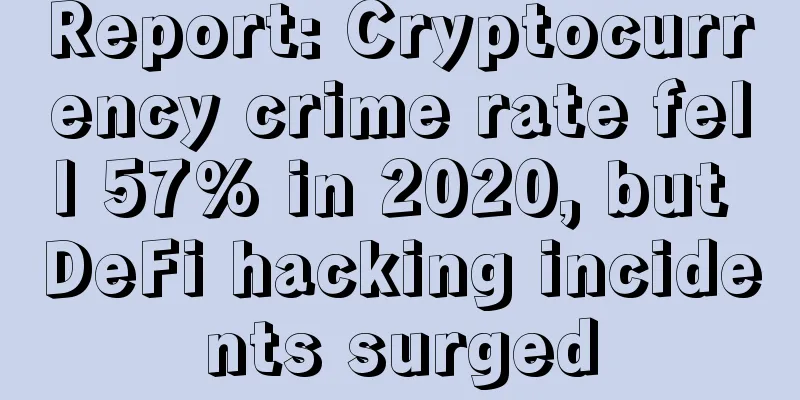Can Binance Win the Second Stablecoin War?

|
Blockchain October 24th News Today, FTX founder SBF said on social media that Binance had previously converted USDC to BUSD, indicating that the second large-scale stablecoin war has begun, but the difference this time is that the positive interest rate in the money market will bring more income to stablecoins. At the same time, stablecoin issuers also understand that they should never prevent customers from redeeming, otherwise stablecoins will no longer be stablecoins. Why is it the second stablecoin war? In fact, the first stablecoin war took place in 2018, when USDC and USDT took a decisive share of the stablecoin market by defeating TUSD, GUSD, and USDP. To this day, USDT is still the largest stablecoin by market capitalization, and Circle's USD stablecoin USDC is also not to be underestimated (although its market capitalization has recently been eroded by BUSD). Overall, stablecoins occupy three of the top 10 cryptocurrencies by market capitalization, with a total value of $134 billion, which is comparable to Ethereum's market capitalization. However, this market condition, which had lasted for nearly four years, changed in September this year. At the beginning of last month, Binance officially announced that in order to improve users' liquidity and capital utilization efficiency, Binance will automatically convert users' existing USDC, USDP, TUSD stablecoin balances and newly recharged stablecoins into BUSD at a 1:1 ratio, and starting from September 29, Binance platform users will use the merged BUSD balance for transactions. Looking back now, Binance’s move at that time did indeed kick off the second stablecoin war. Data does not lie. In the past month, the market value of the US dollar stablecoin USDC has evaporated by more than $6 billion. In contrast, BUSD has become the third largest stablecoin in terms of trading volume, and its market value has risen all the way to a high range of $22 billion. Who will be the winner of the second stablecoin war? Judging from the current "battle situation", Binance's blitzkrieg has achieved good results. After Binance released the announcement, its stablecoin BUSD quickly widened the gap with Pax Dollar (USDP) and True USD (TUSD), two stablecoins with smaller market capitalizations, and concentrated its firepower on competing with USDC. It should be noted that although BUSD is issued by Binance, it is operated and managed by Paxos, a New York-regulated financial institution, for the stablecoin supply and reserves of BUSD. Since Paxos is regulated by the New York State Department of Financial Services, it has access to the New York State regulated banking system, while USDC is not formally regulated in this way, but it is informally regulated because Circle has been operating under remittance licenses in 46 states in the United States. On the other hand, although the current market value of BUSD is still far behind USDC, Binance is the largest trading platform in the industry, with a daily trading volume of up to US$268 million. As BUSD replaces USDC on the Binance platform, users are likely to gradually alienate this second largest stablecoin by market value, while the liquidity and capital efficiency of BUSD will improve. So, will Binance “take over” USDT in the same way? USDT is the largest stablecoin on the market, but it is certainly not completely stable. Just a few months ago, the Terra depegging almost destroyed the entire crypto ecosystem, including stablecoins, but Tether somehow successfully passed the market stress test, withstood all the turmoil and finally did not depeg from the US dollar. At this stage, taking over USDT is a difficult task, but it is not completely impossible to defeat it. First, USDT issuer Tether is plagued by reputation issues and market concerns about its reserve assets. Tether is run by the mysterious man behind offshore cryptocurrency exchange Bitfinex and has always refused to accept trusted audits and supervision. Secondly, USDT itself is an inefficient stablecoin that requires a "T+1" process to mint and destroy tokens. For market makers, why use USDT if there is BUSD that can be minted and redeemed in real time? In fact, Binance has already made some subtle moves, such as terminating trading pairs for multiple stablecoins, USDT, and other major cryptocurrencies such as Bitcoin and Ethereum. In short, BUSD will definitely take over Tether in the future, but it must work hard to gain the trust of the investment community. Only the future can tell us in which direction USDC, BUSD, and USDT will develop, but for now, Binance needs to prepare for a big stablecoin war. What does Binance need to do to prepare for the second stablecoin war? If BUSD wants to win the second stablecoin war, we have three suggestions: First, Binance needs to pay attention to its users, especially retail investors. If they insist on wanting USDC, Pax, or Trust as their stablecoin, they may end up losing users before the war is over. Second, Binance needs to manage the conversion between BUSD and other stablecoins, because once a stablecoin experiences huge price fluctuations, like what happened to Terra at the beginning of the year, Binance is likely to bear greater market risks (of course, Terra’s collateral is based on algorithms, while USDC’s collateral is US dollars). Third, Binance needs to deal with regulatory risks. It is undeniable that most stablecoins on the market are currently pegged to the US dollar, which means that they are essentially "American products", but US regulators do not seem to trust Binance, even though Binance has blocked US users since 2020. Although some regulatory concerns can be eliminated by cooperating with Paxos, even if there is no operational responsibility, it must comply with US laws. Summarize USDT and USDC have dominated the stablecoin market for many years. We need a new player who dares to show his sword and make adjustments to the throne. Binance is expanding BUSD liquidity and market value based on compliance and using its own advantages. As for whether it can become the "new king of stablecoins", perhaps only time can give us the answer. Part of this article is compiled from digfingroup |
<<: The meme coin craze in the bear market was born out of Vitalik’s joke
>>: Among the six new public chains bet by top institutions, which one is more hardcore?
Recommend
Supporting RMB trading: Huobi PRO launches digital currency over-the-counter trading
According to the official website of Huobi PRO, H...
IMG officially landed on UBit Pro trading platform, with a rise of nearly 300%
IMG was opened for trading on the UBIT Pro exchan...
Women with double chins are very lucky and have very good fortune.
For a person, his or her facial features often re...
How do men and women read faces to determine whether they will have a boy or a girl?
1. Men with thick eyebrows are more likely to giv...
Crypto markets cool after FOMC's tough talk
Crypto markets retreated from gains on Wednesday ...
Analysis of moles on women's left and right ribs
Traditional physiognomy covers a wide range, among...
Bitcoin.org website suspected to be hacked, users should beware of scams
On September 23, there was a community giving bac...
Is it good for a person to have two career lines?
The career line, also known as the destiny line, ...
Monetary Authority of Singapore Monetary Policy Statement for April 2020
The Monetary Authority of Singapore released its ...
What does pregnancy palmistry look like?
What does pregnancy palmistry look like? The char...
Does a woman with a knotty nose mean she will live longer? Is it worth marrying?
The bridge of the nose occupies an important posi...
What are the characteristics of girls with phoenix destiny? What kind of face has a good destiny for girls?
What are the characteristics of girls with Phoeni...
What facial features are bad for your wife?
Physiognomy is one of China's traditional cul...
Is the hype over Bitcoin domain name BNS an opportunity or a risk?
On May 28, a screenshot of the 001.btc domain nam...
The hair is hard and he is straightforward and not afraid of offending others.
People with hard hair texture are very direct and...









